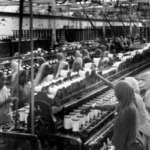While all you can think of when you say ‘ Nagpur’ is the luscious oranges, we’re walking an extra mile today – retracing our forefathers’ steps in the lanes of this heritage neighborhood. In simple words, the history of this city stretches far more than just oranges – and we’ll tell you why!
No matter what cultural background you belong to, the great city ensures to accommodate all of us. Garba? We got you! Ganapati? We got you! Diwali? We got you too!
It’s a city filled with enthusiasts who absolutely love to celebrate the spirit that life has to offer while making sure each one has fun. This grand establishment hasn’t developed overnight but has been built with several hands, one day at a time.
So let’s understand it briefly –
Before Indian Independence
A prominent leader and king – Bakht Buland Shah of Deogarh found our city in 1703, soon followed by Chand Sultan, his bright successor. He constructed a three-mile-long wall around his City by the Nag River.
While this lasted for a while, the city was still in search of stability. Then came the prestigious reign of the Bhonsles (that also greatly shapes our city till today) – they brought the necessary cultural as well as economic prosperity.
As soon as Nagpur entered the year 1817 – it was annexed by the British as a result of Appasaheb Bhosle’s defeat in the war of Sitabuldi.
The British Reign
The war that took place in the current-day Sitabuldi area was revolutionary; it was the downfall of the great Bhonsales of our city and paved the way for Britishers to rule. Then entered Sir Patrick Geddes in 1915, followed by the formation of Nagpur Improvement Trust (N.I.T) – both with the motive to carry out planned development. Our city was soon called Central Provinces until 1956, which led to it becoming the second capital of Maharashtra.
Suddenly, doesn’t all those British Architecture buildings in the west of our city make more sense?
The influence of these architectural designs comes from the British reign and we’re not complaining!
After Indian Independence
Soon after India became independent in 1947, Nagpur was the capital of Madhya Pradesh before the Indian states were reorganized along linguistic lines in 1956. Our city then became a prominent part of Maharashtra and has been the same way till today.
A lot has been changed and preserved since that time. Our city has been a silent gem, ready to show its talents and unleash a platform where people can expect a high-quality life. It is a place that perfectly intertwines modern and traditional, giving you the best environment to grow from the inside out!
So tell us in the comments, what do you love the most about Nagpur?

Nivedita
Wonderfully written, very well executed.
Congratulations @Ritu🥺
Bahot bahot wishes sending your way which is literally 1m away cuz you sitting right by my side… 🤭❤️
Chirag Kacha
To be honest, I generally don’t read. But, this blog caught my attention. Well Articulated!
Nagpur is my second home 🫶🏼🏠
Sagar ghorpade
Nice and informative info about nagpur history i upgrade my bu this artical thanks Ritu ma’am. And i add some information about city Nagpur, this is centrally located i.e. in the heart of India. Well it is not as busy as Bangalore and Mumbai but it is good to live in here as there is lot of flora and fauna surrounding to it.
Nagpur has equipped a well and owned status by the supporting culture of people also its a paradise for the Non-Vegetarians (Saoji).
Also consisting of some of the great colleges of Maharashtra VNIT,IMT Nagpur,AIIMS Nagpur ,IIM Nagpur and many more colleges for undergraduate and postgraduate program.
The city contains the IT Hub at a very prime location with tech giants like Persistent have their branches over there further the ‘Mihan’ project is one of the biggest project in Maharashtra which is also going on successively .
Purvi Alone
The article is really eye catching and is written so well . It maintains the interest in the topic till the end .